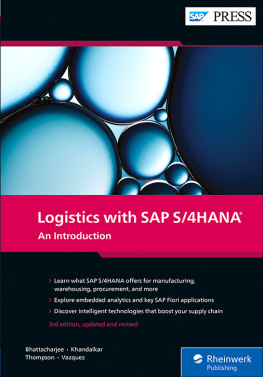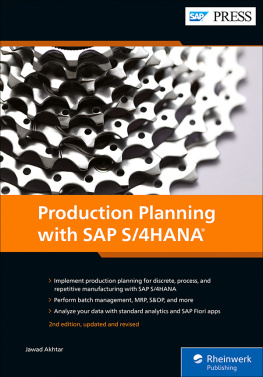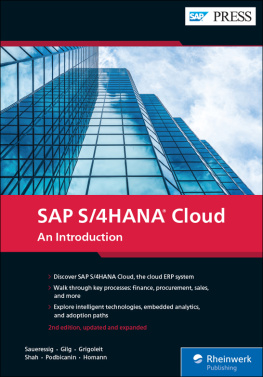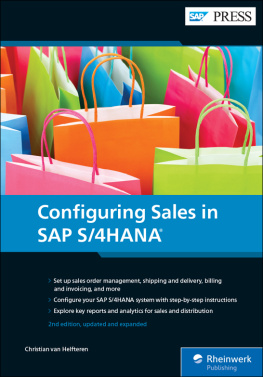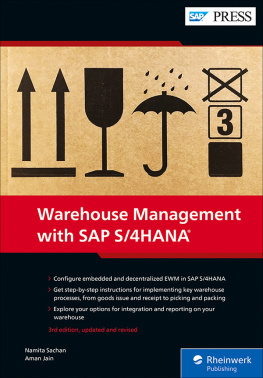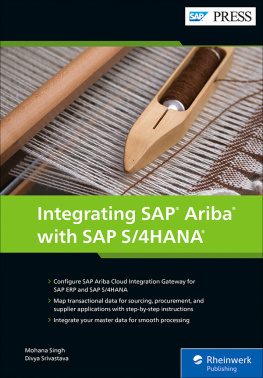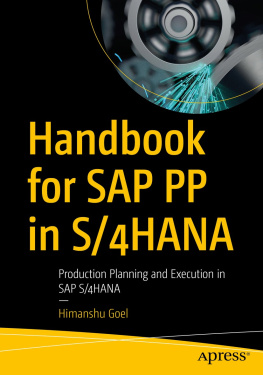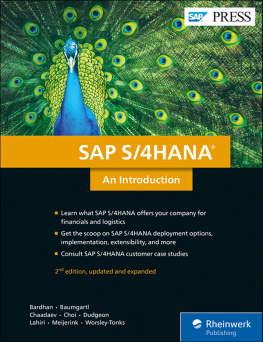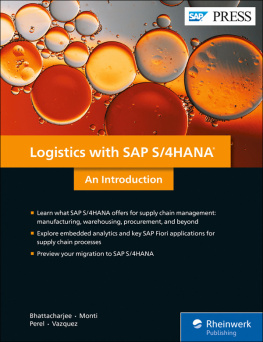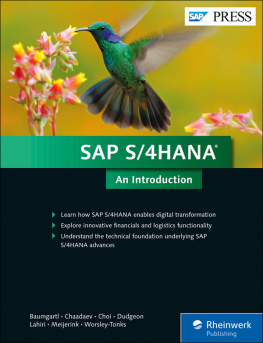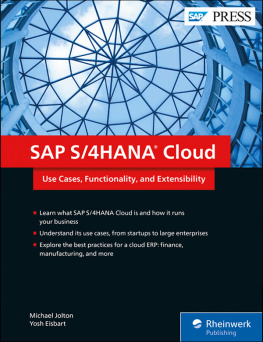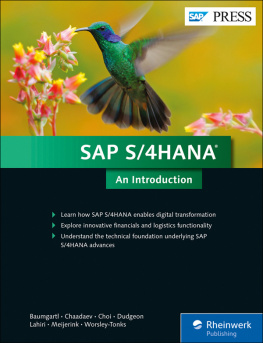There were some complicated logistics behind publishing this third edition.
First, we got the team back together (and added invaluable new subject matter experts and project managers). In the case of this book, dozens of SAP professionals contributed their expertise, which required setting an ambitious, collaborative schedule. Next, we took stock of the SAP S/4HANA landscape. What has changed since the second edition? What new features are available for the key logistics business processes? Where can we fit these topics into the existing books footprint, and where do we need to start from scratch?
Once the manuscript was complete, the manufacturing process began. Our production team created digital e-book formats and our printer produced physical copies to transport to warehouses around the world. Finally, as we received sales orders, books were shipped straight to customers (or were downloaded directly into e-libraries).
Thats the logistics behind the book in your handsbut what about the logistics content in the book? In these pages, youll find coverage of cutting-edge features and functionality for SAP S/4HANA, from central procurement to digital manufacturing to supplier protection and beyond, up to date for release 2021.
What did you think about Logistics with SAP S/4HANA: An Introduction ? Your comments and suggestions are the most useful tools to improve our books, from one edition to the next. Please feel free to contact me and share any praise or criticism you may have.
Notes on Usage
This e-book is protected by copyright . By purchasing this e-book, you have agreed to accept and adhere to the copyrights. You are entitled to use this e-book for personal purposes. You may print and copy it, too, but also only for personal use. Sharing an electronic or printed copy with others, however, is not permitted, neither as a whole nor in parts. Of course, making them available on the internet or in a company network is illegal as well.
For detailed and legally binding usage conditions, please refer to the section .
This e-book copy contains a digital watermark , a signature that indicates which person may use this copy:
Notes on the Screen Presentation
You are reading this e-book in a file format (EPUB or Mobi) that makes the book content adaptable to the display options of your reading device and to your personal needs. Thats a great thing; but unfortunately not every device displays the content in the same way and the rendering of features such as pictures and tables or hyphenation can lead to difficulties. This e-book was optimized for the presentation on as many common reading devices as possible.
If you want to zoom in on a figure (especially in iBooks on the iPad), tap the respective figure once. By tapping once again, you return to the previous screen. You can find more recommendations on the customization of the screen layout on the .
Foreword
In 2009, SAP announced its in-memory proprietary database, SAP HANA, which is the mainstream technology for SAP S/4HANA. Since then, SAP accelerated its investments, building momentum in two areas: adopting in-memory database-based applications for a better user experience and improved predictive analytics and automation; and moving all its applications to the cloud, making it easier for chief information officers (CIOs) to adopt the private and public cloud. SAP leadership also adopted an aggressive and unique approach by rethinking how end users, mid-level managers, and executives can interface with the next-generation SAP S/4HANA and other applications, a concept that most of us have not seen before in SAP. To its credit, the SAP HANA database platform helped SAP to completely transform the ERP market in less than a decade.
Starting with the finance-only version during early 2015 (SAP Simple Finance), SAP soon released its rearchitected flagship ERP platform, popularly known as SAP ERP, on SAP HANA, and branded it as SAP S/4HANA Enterprise Management. Since 2015, SAP has released newer versions with added functionalities once every year for its on-premise and private cloud products. As of the time of writing, the current version is 2021, which was released in October 2021. In parallel, SAP has also introduced a public cloud version, SAP S/4HANA Cloud, with a faster upgrade cycle (every three months).
What started with an in-memory business intelligence engine is now the mainstream digital transformation enabler and a must have application platform for legacy SAP customers. SAP has taken the lead and brought forward innovations on SAP S/4HANA that help organizations embrace modern technologies and capabilities to stay relevant in the age of cloud, analytics, mobility, and artificial intelligence (AI). Over the last 8 years, significant development effort has gone into the SAP S/4HANA stack, and customer adoption has continued to accelerate. Starting with a modest, and possibly a skeptical, beginning in 2015 by only a handful trailblazers, customer adoption has seen a sharp spike, and companies have lined up to move to new SAP S/4HANA platform. Currently, most CIOs in my network who chose SAP as their ERP platform have either embraced SAP S/4HANA or are planning to do so within the next 18 months.
Speaking for myself, I have gone through an SAP S/4HANA transformation journey twice, once with my prior employer, Synopsys, and now with my current organization, AMD. Synopsys was a long-time SAP partner and consumer of SAP technology. We were one of the early adopters, and I had the opportunity to witness the excitement and the buzz in the employees when we launched SAP S/4HANA Finance in June 2017. We closely aligned with SAP in executing our multiyear business application transformation roadmap. AMD has also been a long time SAP ERP user. Currently, I am overseeing the transformation at AMD, where we are enabling digital transformation as well as mergers and acquisitions-related synergy capture with Xilinx, enabled by SAP S/4HANA 2021 on its recently introduced RISE with SAP platform. In both cases, we engaged Deloitte to help with the technical implementation and to ensure alignment between various business partners, IT stakeholders, and SAP. At Synopsys, we successfully launched SAP S/4HANA in a very short span of just over 9 months. At AMD, we currently plan on completing our global transformation in just 13 months.

